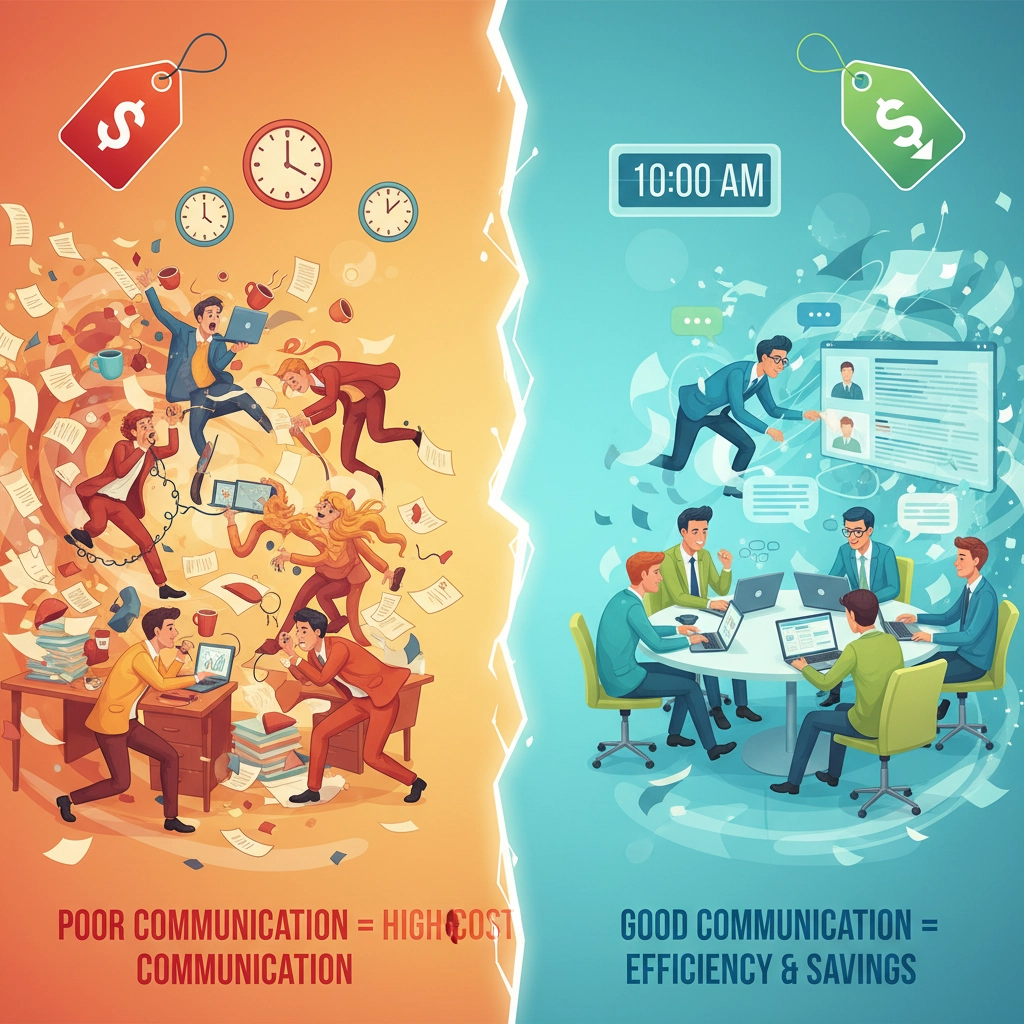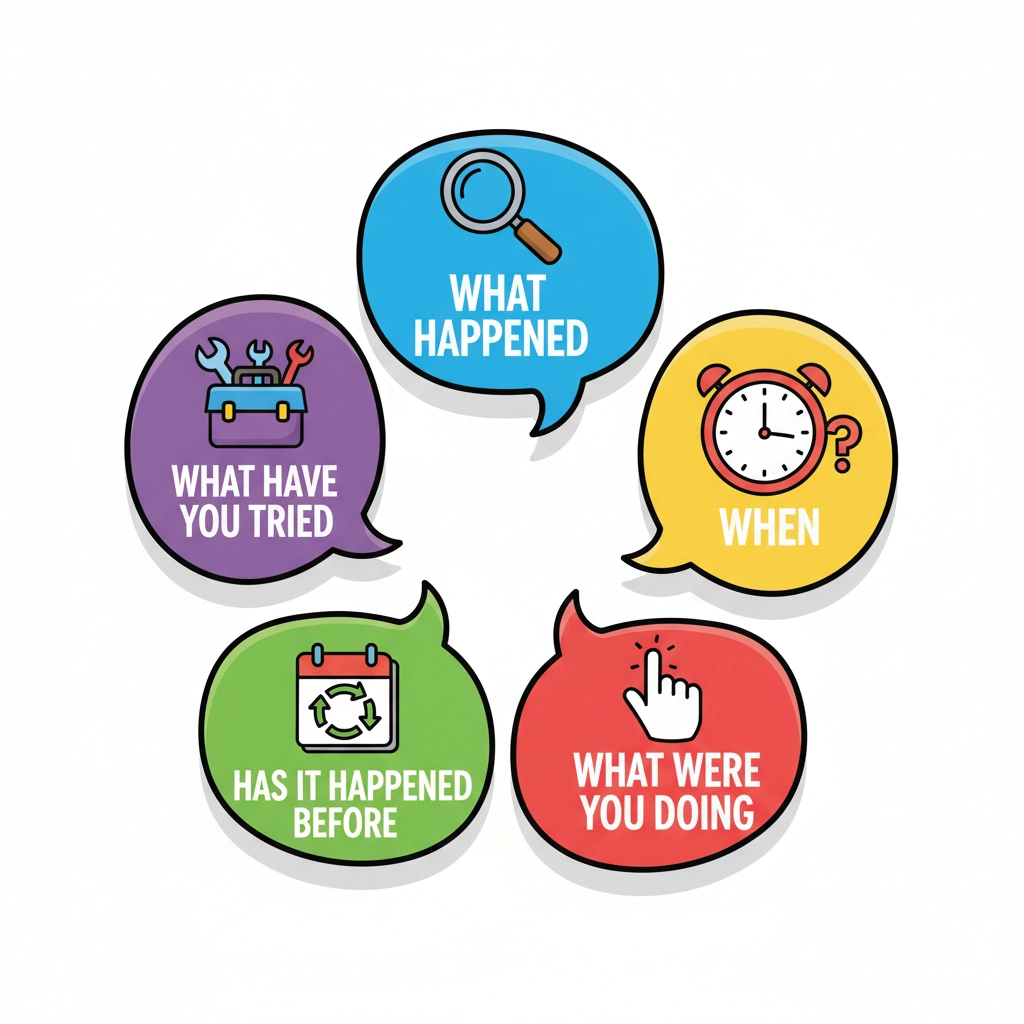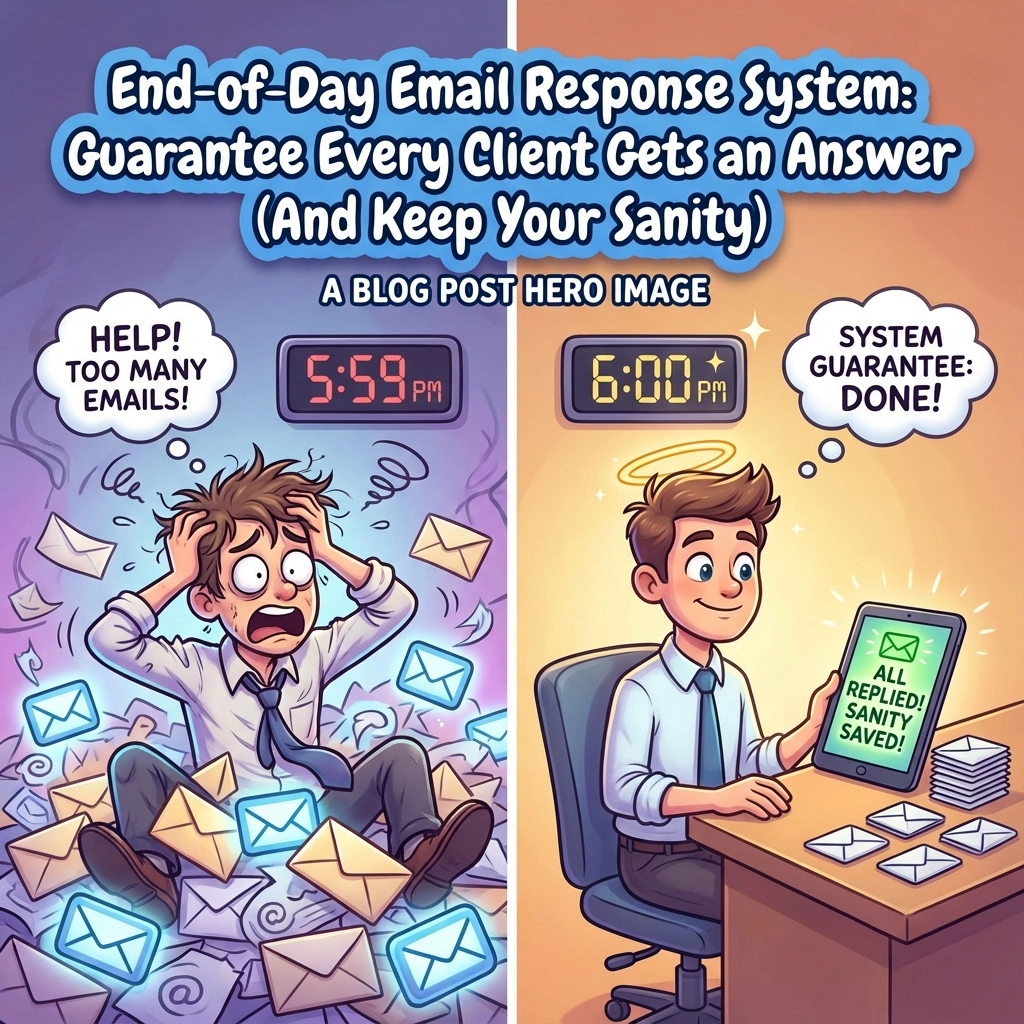Running a successful business requires mastering many skills: leadership, financial management, strategic thinking, and operational efficiency. But there’s one fundamental skill that business owners consistently overlook, and it’s costing them time, money, and competitive advantage: clear communication.
If you can’t articulate a problem, respond to follow-up questions, or explain what’s actually happening with your technology, you’re not just making your IT provider’s job harder: you’re putting your entire business operation at risk.
The Communication Breakdown That’s Costing Your Business
Let’s be honest about what we see in the field. Too many business owners and their teams open support tickets that read like cryptic riddles. They’ll say their computer is “acting weird” or their email is “broken,” then disappear when we ask for details. Others respond to our troubleshooting questions with radio silence, leaving us to guess what’s happening while their business bleeds productivity.

Here’s what poor communication looks like in practice:
The Ghost Client: Opens a ticket claiming everything is “down,” then vanishes when we ask follow-up questions. Days later, they’re frustrated that nothing’s been fixed, not realizing we’ve been waiting for basic information to even begin troubleshooting.
The “I’m Confused” Responder: When given step-by-step instructions, they respond with “I’m confused” without explaining what specific part is unclear. This forces us to guess what’s causing the confusion and often leads to multiple rounds of back-and-forth that could have been avoided.
The Instruction Ignorer: Receives detailed troubleshooting steps but decides to “try something different” instead, then complains when their improvised solution makes things worse.
The Vague Descriptor: Reports that their system is “slow,” “glitchy,” or “not working right” without providing any context about when it started, what they were doing, or what specifically is happening.
This isn’t just frustrating: it’s expensive. Every unclear communication creates delays, increases support time, and ultimately costs your business money through extended downtime and repeated troubleshooting sessions.
Why Articulation Directly Impact Your Bottom Line
Think about communication as the lifeline of every business interaction. When you can explain an issue clearly and completely, problems get solved faster. When you can’t, you’re forcing your IT support team to work with incomplete information, which is like asking a doctor to diagnose you while you’re hiding half your symptoms.

Poor articulation creates a cascade of business problems:
Extended Downtime: Unclear problem descriptions mean longer diagnosis time. What could be a 15-minute fix turns into a multi-day investigation because we’re missing crucial details about when the issue started or what triggered it.
Increased Support Costs: Vague tickets require more back-and-forth communication, more time spent on each issue, and often multiple support sessions to resolve what should have been a single interaction.
Delayed Decision-Making: If you can’t clearly communicate what’s happening with your technology, you can’t make informed decisions about solutions, upgrades, or business continuity plans.
Operational Inefficiency: Teams that can’t articulate technical problems to each other waste time on workarounds instead of addressing root causes, creating ongoing productivity drains.
Competitive Disadvantage: While you’re struggling to explain and resolve basic technical issues, your competitors with better communication processes are moving faster and more efficiently.
The harsh reality is this: if you can’t communicate effectively about your technology problems, you’re limiting your business’s ability to operate at full capacity.
The Five-Question Framework for Effective IT Communication
Most business owners think they need to understand technology to communicate about it effectively. That’s not true. What you need is a systematic approach to describing what’s happening. Before opening any support ticket, answer these five questions:

1. What exactly happened?
Don’t just say “it’s broken.” Describe the specific behavior: “I get an error message that says ‘Connection timeout’ when trying to open email,” or “The screen goes black after I log in, but I can still hear sounds.”
2. When did it start?
Timing matters enormously. “This morning after the Windows update,” “Right after I installed that new software,” or “It’s been happening gradually over the past week” all point to different solutions.
3. What were you doing right before it happened?
Context is crucial. Were you opening a specific program, downloading a file, or installing something new? This information often points directly to the cause.
4. Has it happened before?
Is this a new problem or a recurring issue? If recurring, when does it typically happen? This helps us determine if it’s an emerging problem or a pattern we need to investigate.
5. What have you already tried?
Don’t make us suggest solutions you’ve already attempted. Tell us if you’ve restarted, logged out and back in, checked cables, or tried different browsers.
You don’t need technical expertise to answer these questions: you just need to pay attention and describe what you observe. A clear description from someone who “doesn’t know computers” is infinitely more valuable than a vague complaint from someone who thinks they’re tech-savvy.
Use Your Resources Before You Submit
Here’s a practical tip that most clients overlook: use our website chat function as a thinking tool before you submit a formal support ticket. Don’t use it to solve the problem directly, but to help you organize your thoughts and practice articulating what’s happening.
Think of the chat as your scratchpad. Type out your problem, work through those five questions, and clarify your thoughts. Once you can explain the issue clearly in chat, transfer that clear description to your support ticket. This simple step eliminates most communication delays and gets you faster resolutions.

When something is unclear in our communications, don’t just say “I’m confused.” Tell us specifically what part is confusing. Instead of “I don’t understand step 3,” say “In step 3, you mention clicking the blue button, but I only see green and red buttons on my screen.” Specific confusion gets specific clarification.
Best Practices for Business Technology Communication
Effective communication about technology issues isn’t complicated, but it does require discipline. Here are the non-negotiables:
Read everything before responding. Too many people skim emails and miss crucial information, then ask questions that were already answered. This wastes everyone’s time and makes you look unprofessional.
Respond promptly to follow-up questions. When we ask for additional information, we’re not trying to be difficult: we need that information to solve your problem. Delayed responses mean delayed solutions.
Be specific about what you don’t understand. Saying “this is confusing” doesn’t help anyone. Explain exactly what step, instruction, or concept is unclear.
Follow instructions as written first. Our troubleshooting steps are tested and proven. Don’t improvise unless we specifically ask you to try an alternative approach.
Document recurring issues. Keep notes about when problems happen, what triggers them, and what resolves them temporarily. This information is invaluable for finding permanent solutions.
Professional Communication Standards Apply Everywhere
Here’s what many business owners miss: the communication skills you need for effective IT support are the same skills you need for every other aspect of your business. Clear, responsive, specific communication isn’t just courtesy to your service providers: it’s a core competency that affects every business relationship.

Whether you’re talking to customers, vendors, employees, or IT support, the principles remain the same. Be clear about what you need, respond promptly to questions, ask specific questions when you need clarification, and follow agreed-upon processes.
At US Tech Support Solutions, we’ve seen how businesses transform when they improve their communication practices. Companies that communicate clearly get faster resolutions, build stronger vendor relationships, and operate more efficiently across all departments.
The Bottom Line: Communication as Competitive Advantage
If you can’t communicate clearly about your technology needs, you can’t compete effectively in today’s business environment. Every unclear ticket, every delayed response, every “I’m confused” without specifics slows down your entire operation while your competitors move ahead.
The businesses that thrive are the ones that treat communication as a strategic skill, not an afterthought. They train their teams to articulate problems clearly, respond to vendor questions promptly, and ask specific questions when they need help.
Your ability to communicate effectively about technology issues isn’t just about being nice to your IT team: it’s about running a professional business that can adapt quickly to challenges and opportunities. If you can’t do that, you’re not just doing a disservice to your service providers; you’re limiting your own business potential and letting down everyone who depends on your success.
The choice is yours: continue struggling with unclear communication and accept the delays, costs, and inefficiencies that come with it, or develop the communication discipline that successful businesses require. The companies that get this right don’t just get better IT support( they get better business results across the board.)
Share this:
- Click to share on Facebook (Opens in new window) Facebook
- Click to share on Tumblr (Opens in new window) Tumblr
- Click to share on X (Opens in new window) X
- Click to share on Pocket (Opens in new window) Pocket
- Click to share on Pinterest (Opens in new window) Pinterest
- Click to share on LinkedIn (Opens in new window) LinkedIn



